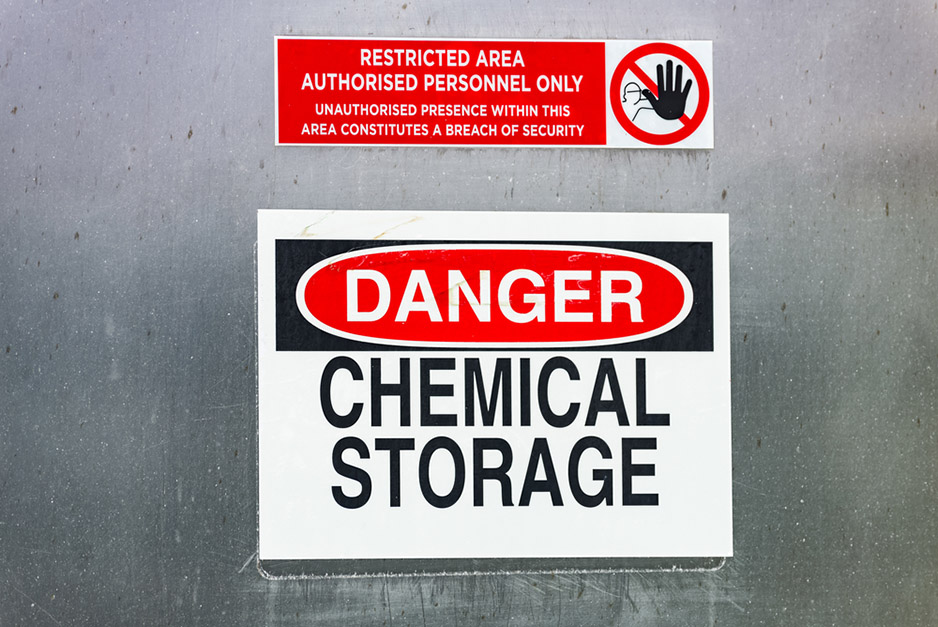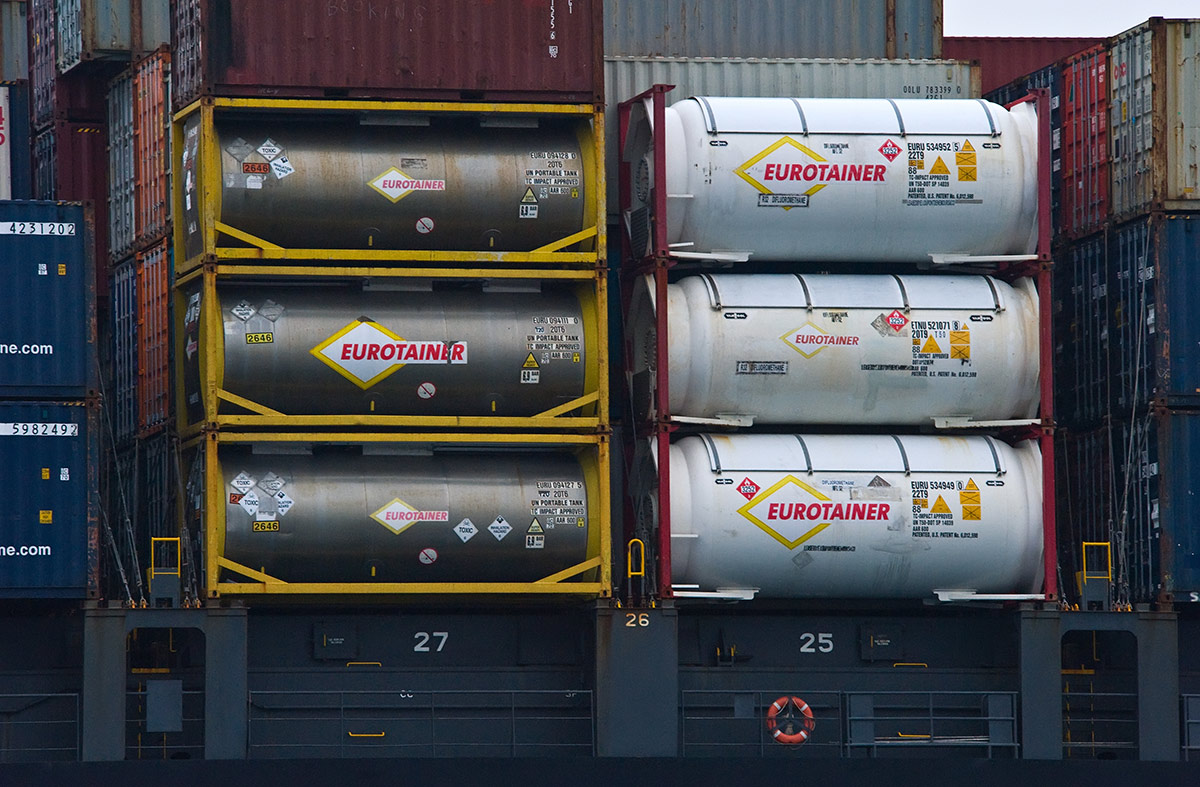Today, we’ll talk about Hazard Class 8, the UN classification for corrosive materials. What do you need to know to ship these materials safely, and what precautions need to be taken when working with them? The hazmat experts at Air Sea Containers have a quick overview for your convenience and safety.
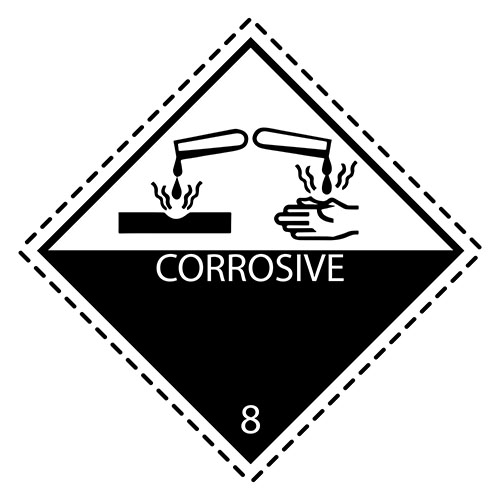
What Goods Are in Hazard Class 8?
Hazard Class 8 is for corrosive materials, defined as substances that can cause significant harm to living tissue and/or corrode steel and aluminum if they leak. Some common goods you’ll find in Class 8 include:
- Strong acids, such as sulfuric or hydrofluoric acid
- Strong bases, such as sodium hydroxide (lye)
- Wet-cell batteries such as lead-acid automobile batteries
- Some types of dye
- Photographic processing chemicals
Class 8 is also subdivided into three packing groups based on how quickly the substance causes tissue or material damage. For more information on Hazard Class 8 packing groups, see the full UN hazmat classifications list.
Rules of Shipping for Hazard Class 8
For detailed instructions on shipping your specific Class 8 goods, you’ll need to consult the U.S. DOT hazmat tables. These tables include detailed DOT regulations for each hazmat-classified substance, and it’s the responsibility of anyone who transports these substances or prepares them for transport to be familiar with the specific rules in each instance.
Can you mail Hazard Class 8 goods? The answer depends on several factors. Class 8 materials are not mailable via international mail. If the material is present in a sufficiently limited quantity and concentration, you may be able to classify it as an ORM-D consumer commodity for domestic ground transport only. Note that some specific listed substances such as hydrofluoric acid and lead-acid batteries are not mailable in any quantity.
Remember that employees also need to be familiar with emergency response procedures for the specific Class 8 goods they’re handling. For this reason, it’s always a good idea to keep a copy of the Emergency Response Guidebook on hand. This book contains detailed response procedures for many different kinds of chemical spills and can save lives in an emergency.
U.S. DOT regulations, as well as the rules of transportation industry associations like the IATA, require anyone transporting Class 8 hazardous goods to clearly label them with labels or placards to alert handlers of the contents. Finally, remember that your freight carrier will likely have its own rules about hazmat transportation, so make sure to be familiar with these as well.
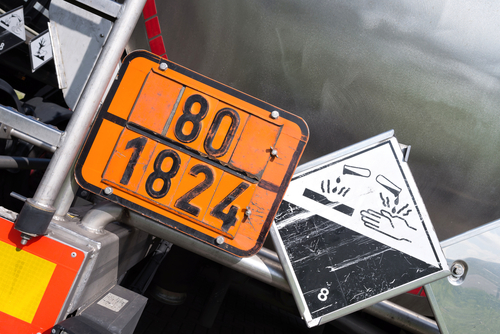
Hazard Class 8 Shipping Materials
Air Sea Containers has over 25 years of experience as a leader in hazmat packaging solutions. We’ve got everything you need to safely ship your Hazard Class 8 cargo, including:
- Vermiculite: A classic void fill material made from natural minerals that’s perfect for shock absorption and moisture control. Excellent for hazmat shipping due to its chemically inert and non-reactive nature.
- Jerricans and Pails: These shipping materials are highly durable and offer great performance for hazmat shipping. You can count on their rugged HDPE or metal construction to keep hazardous goods safe and protected in transit.
- UN Hazmat Packaging: Air Sea Containers offers fully-equipped UN Hazmat Shipping Kits that feature everything you need to package and ship hazardous substances, including overpack boxes, metal paint cans, plastic jerricans and more. We even offer kits specially designed for wet-cell batteries.
- Spill Control Trays and Pallets: Air Sea’s metal and plastic spill control trays and pallets offer essential protection for storing and handling Class 8 goods in drums. Should your drums leak, the built-in sump in these pallets will collect and contain the leak until it can be safely dealt with.
- Hazmat Class 8 Labels and Placards: Labeling your Class 8 goods is a critical step for safety, so make sure to pick up some of our durable Hazmat Class 8 peel-and-stick vinyl labels and Hazmat Class 8 placards.
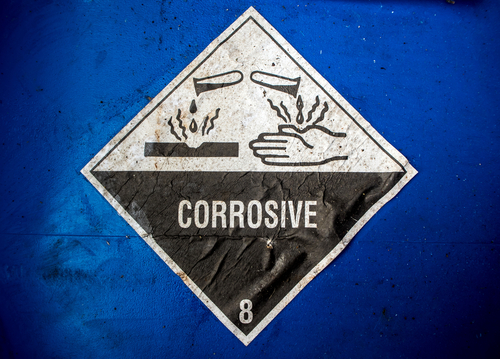
Have more questions on how to ship Class 8 goods safely? Need a specific shipping solution you don’t see here? Air Sea Containers can help. Just contact us online to get a quick quote and friendly service.

